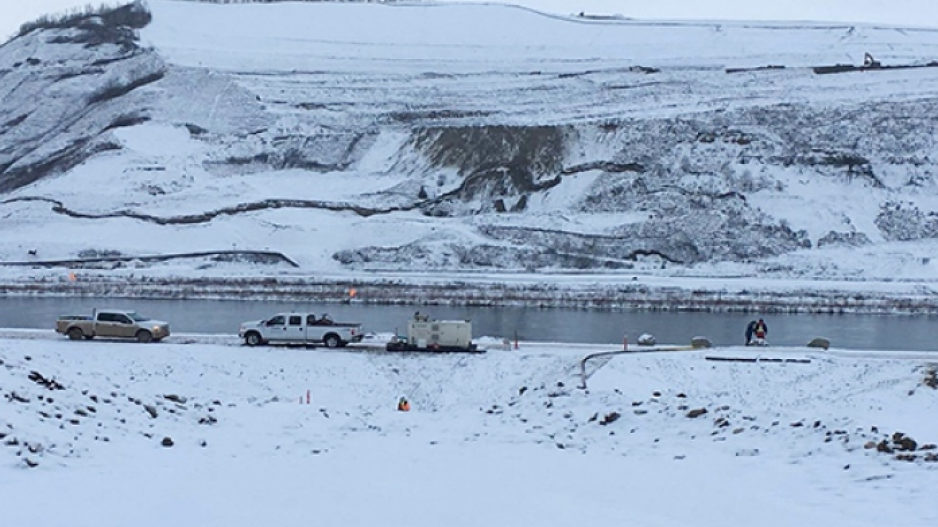A 400-metre tension crack has formed along a haul road on the Site C dam construction site, leading BC Hydro to reassign 30 workers while the area is assessed.
BC Hydro released details on the issue February 24.
“During the construction of a haul road to support this excavation work, a tension crack has appeared” on the north bank of the dam site, a release reads. While such cracks are not unexpected in the area, “this particular crack requires attention due to its significant 400-metre length,” BC Hydro says.
In an interview, Site C spokesperson David Conway said work was continuing on the rest of the site and that the issue would not affect the overall construction schedule.
It is the first time a news release has been issued about a geotechnical issue on the dam project since construction began in summer 2015.
BC Hydro says the crack is being monitored by slope stability experts. While that assessment is ongoing, 30 road construction workers have been reassigned. Around 1,500 people are working on the site.
Construction crews have built haul roads on the north bank of the Peace River near Fort St. John to carry fill, stone and other materials to the dam site in the valley.
Opponents of the $8.8 billion project have long warned the project could suffer slides, shears and other geotechnical issues.
A BC Hydro report carried out by Ernst & Young last year found Site C would likely remain on time and on budget, but warned about geotechnical problems. Despite significant geotechnical work in the lead-up to construction, “it is impossible to understand every nuance of the sub-surface conditions of such a large site,” the report found.
“As a result, unforeseen problems have arisen, and will continue to arise, requiring innovative engineering responses to contain cost increases,” the report found.
The project has $440 million set aside in reserves to cover geotechnical and other issues.
BC Hydro believes initial soil movement on the north bank has stabilized. Crews had planned to remove the unstable soil as engineering work continues on the banks. The next step “is to determine how to continue soil removal, which will need to be undertaken carefully to maintain the stability of the slope.”
Site C would flood 83 kilometres of the Peace River Valley, including farmland and First Nations cultural sites.
B.C. NDP leader John Horgan has said he would send the project to the B.C. Utilities Commission for further review if his party forms government after the May 9 election.




